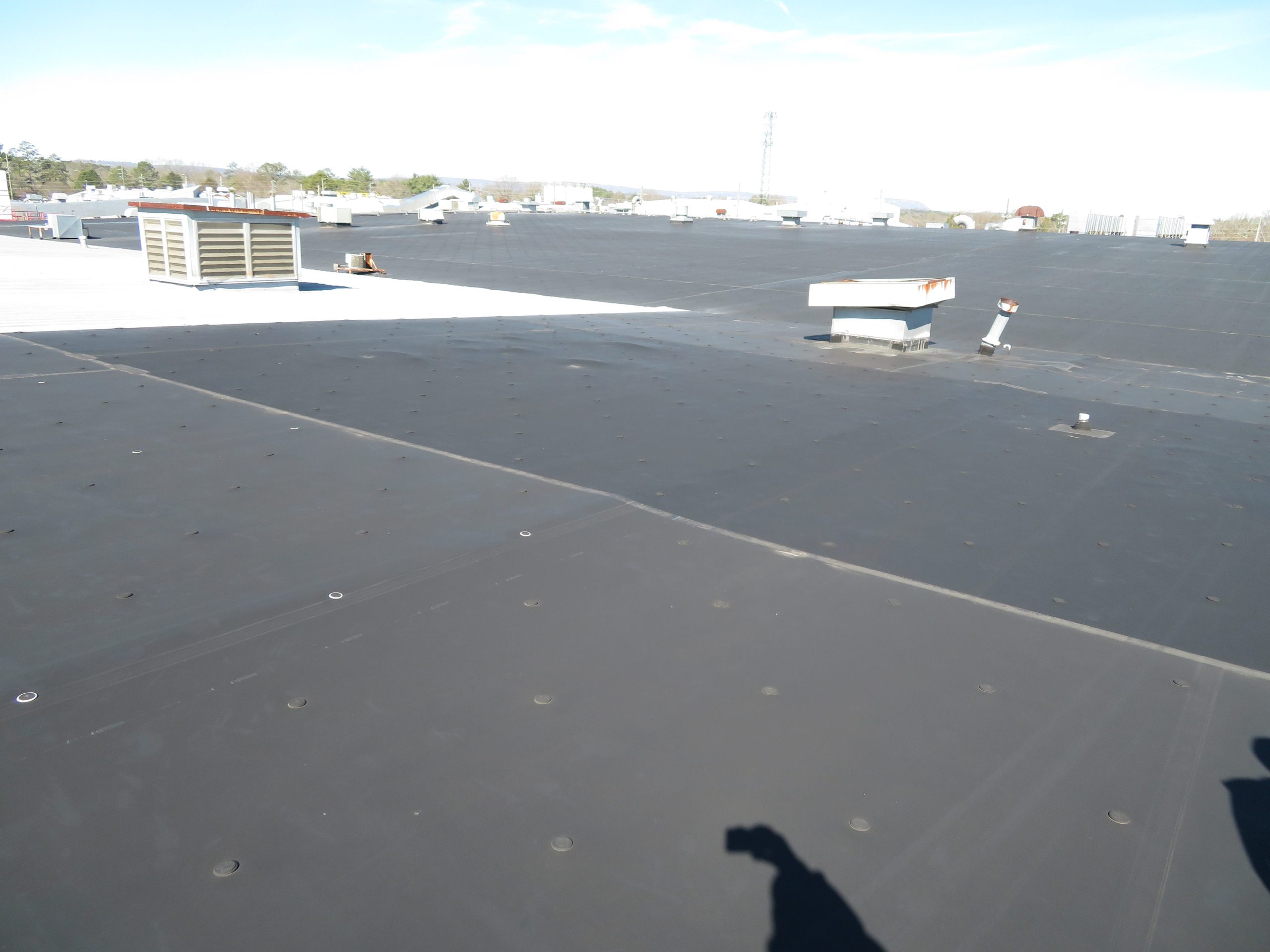Single-Ply Membrane Commercial Roofing
delivers a high quality of performance and durability
Single-Ply Membrane Roofing for Commercial Flat Roofs
Single-Ply Membrane is a time-tested roofing option for commercial, industrial and manufacturing facilities. While Single-Ply Membrane Roofing is one of the most well-known types of commercial roofing material, there are several types to fit your budget and facility needs.
Here at West Roofing Systems in Cleveland, Ohio, we’ve been installing commercial roof systems for over 40 years. Our turnkey solutions deliver energy savings, reduced maintenance, and sustainability – not to mention a durable, long lasting, quality roof.
West Roofing Systems’ experienced project managers and applicators bring decades of experience to each job, ensuring the best solution at the best price.
There are two main types of single-ply membrane commercial roofing: Thermoplastic Polyolefin (TPO) and Ethylene Propylene Diene Terpolymer (EPDM). They differ in their chemical makeup, how they are installed and their energy efficiencies.
Thermoplastic Polyolefin
Thermoplastic Polyolefin is a single-ply roofing membrane that is one of the fastest growing commercial roofing systems on the market. TPO roofing systems are made up of a single layer of synthetics and reinforcing scrim that can be used to cover flat roofs.
TPO has gained industry acceptance with the natural reflective surface to reflect UV rays. As reported by the National Roofing Contractors Association (NRCA) TPO takes up about 40% of the commercial roofing market share.
Ethylene Propylene Diene Monomer
Ethylene Propylene Diene Monomer is a single-ply membrane that consists of a synthetic rubber compound that allows it to be flexible. EPDM has been used on commercial roofing facilities since the 1960s and is considered a time-tested option. Although EPDM has more of a trusted history with commercial roofing, it only has about 20% of the commercial roofing market according to the NRCA.
With EPDM, you have an option of choosing from 45, 60, or 90 mils thickness and either black or white for the color. While TPO has a natural white color, EPDM results in a dark gray or black color for your roof. While the darker color is not helpful in reflecting UV rays, it does retain heat and can be useful in cooler weather.
For an average 20,000 sq. foot commercial roof, it will usually cost between $3.50 and $7.50 per square foot in materials and labor to install a typical single-ply membrane commercial roofing system.
Some variables that affect pricing include:
- Size of Your Roof
- Condition of Existing Roof
- Insulation Choice
- Membrane Choice
- Installation Choice
- Access to your roof
- Climate/Weather Patterns in Your Area
- Type of Warranty
West Roofing Systems, Inc. uses multiple brands of membranes, with a variety of different types within each manufacturer, which allows us to meet the needs of each customer. Each type of membrane is designed to deliver a high quality of performance and durability, depending on weather conditions within each region.
The benefits of installing a single-ply membrane roofing system, rather than another roof type, are numerous in terms of installation, performance, cost, and longevity.

Proven Track Record
EPDM roofing has been used for commercial flat roofing for over 60 years. This amount of time on the market has allowed various laboratory and field studies to be performed and tracked.
Options for Insulation Materials
Since single-ply membrane roofing does not include the insulation factor, as a customer you have more options to choose from to insulate your facility’s roof. There are a few types of insulation options the facility manager/owner can to choose from: Polyisocyanurate, Expanded Polystyrene. Extruded Polystyrene.
Choice of Reflective or Retentive Properties
TPO is generally manufactured white and highly reflective while EPDM is often described as “Black Roofs,” due to the natural dark color of the membrane.
Easy Installation
Unlike the complexities involved with processing spray polyurethane foam roofing, installing single-ply membrane roofing is relatively simple. There are three ways to attach the membrane to the cover board: ballasted, with an adhesive or mechanically fastened.
Lightweight and Flexible
Even though there are multiple layers, and you can choose the thickness of the membrane installed on your roof, overall single-ply membrane roofing is lightweight compared to other commercial flat roof systems. (Excluding ballasted systems)







